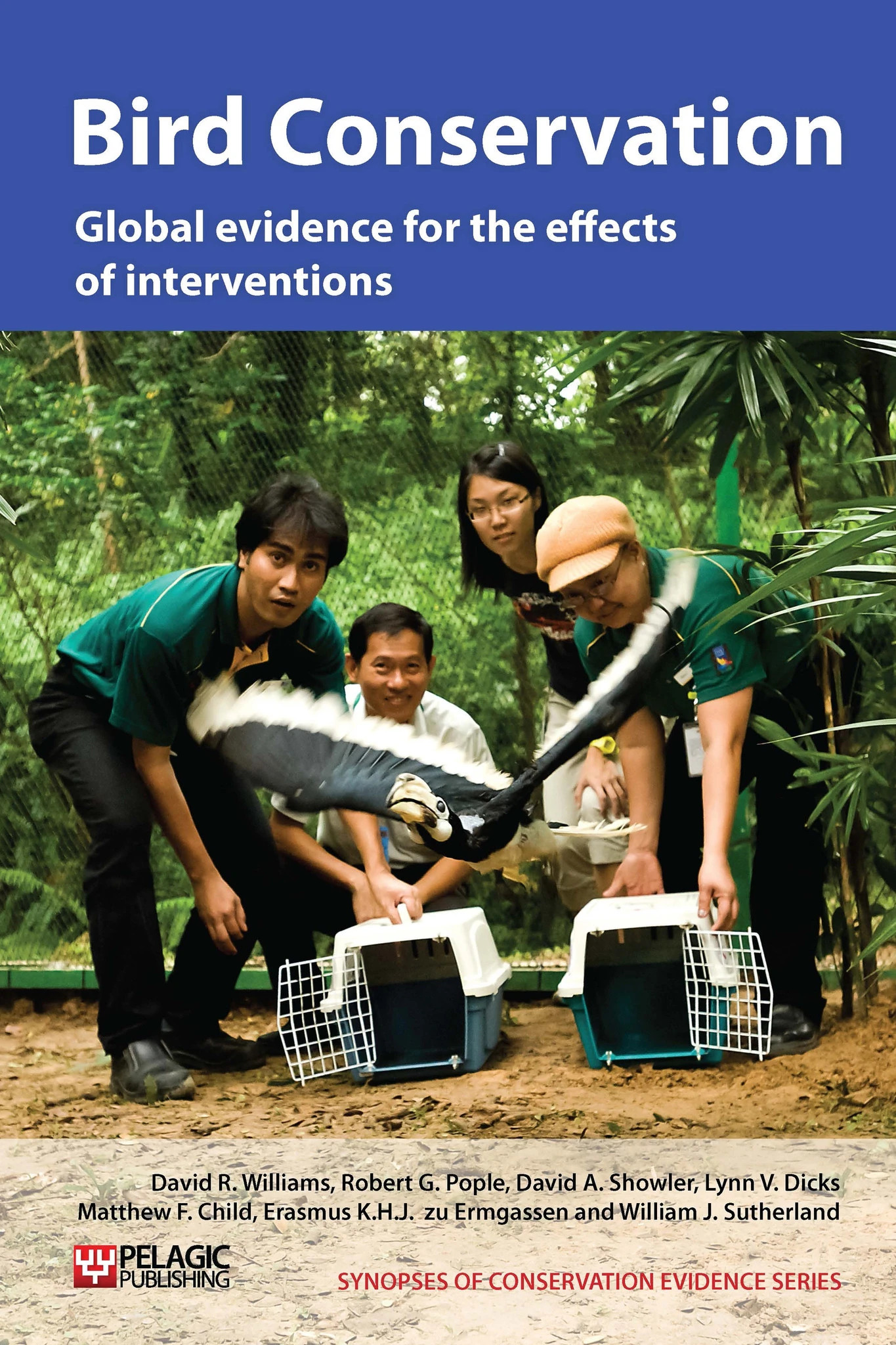Actions to conserve biodiversity
We have summarised evidence from the scientific literature about the effects of actions to conserve wildlife and ecosystems.
Review the evidence from the studies
Not sure what Actions are? Read a brief description.
Search for evidence
e.g. "frogs chytrid"
454 Actions found
Refine
Hide
454 Actions found
Download Actions
| 0 selected |
|
Order results by:
| Action | Effectiveness | Studies | Category | |
|---|---|---|---|---|
|
Replace non-native species of tree/shrub Action Link |
Unknown effectiveness (limited evidence) | 1 |
|
|
|
Use ring-barking (girdling), cutting or silvicides to produce snags Action Link |
Likely to be beneficial | 5 |
|
|
|
Add woody debris to forests Action Link |
Unknown effectiveness (limited evidence) | 1 |
|
|
|
Remove coarse woody debris from forests Action Link |
Unknown effectiveness (limited evidence) | 2 |
|
|
|
Apply herbicide to mid- and understorey vegetation Action Link |
Likely to be ineffective or harmful | 7 |
|
|
|
Treat wetlands with herbicide Action Link |
Likely to be ineffective or harmful | 4 |
|
|
|
Employ grazing in natural grasslands Action Link |
Trade-off between benefit and harms | 12 |
|
|
|
Employ grazing in artificial grasslands/pastures Action Link |
Trade-off between benefit and harms | 10 |
|
|
|
Employ grazing in non-grassland habitats Action Link |
Trade-off between benefit and harms | 8 |
|
|
|
Plant trees to act as windbreaks Action Link |
Unknown effectiveness (limited evidence) | 2 |
|
|
|
Re-seed grasslands Action Link |
Unknown effectiveness (limited evidence) | 2 |
|
|
|
Fertilize artificial grasslands Action Link |
Unknown effectiveness (limited evidence) | 4 |
|
|
|
Raise water levels in ditches or grassland Action Link |
Trade-off between benefit and harms | 7 |
|
|
|
Manage water level in wetlands Action Link |
Trade-off between benefit and harms | 6 |
|
|
|
Use environmentally sensitive flood management Action Link |
Unknown effectiveness (limited evidence) | 2 |
|
|
|
Use greentree reservoir management Action Link |
Unknown effectiveness (limited evidence) | 1 |
|
|
|
Plough habitats Action Link |
Unknown effectiveness (limited evidence) | 4 |
|
|
|
Create scrapes and pools in wetlands and wet grasslands Action Link |
Likely to be beneficial | 6 |
|
|
|
Restore or create forests Action Link |
Beneficial | 16 |
|
|
|
Restore or create grasslands Action Link |
Likely to be beneficial | 23 |
|
|
|
Restore or create traditional water meadows Action Link |
Likely to be beneficial | 5 |
|
|
|
Restore or create shrubland Action Link |
Unknown effectiveness (limited evidence) | 4 |
|
|
|
Restore or create savannas Action Link |
No evidence found (no assessment) | 0 |
|
|
|
Restore or create inland wetlands Action Link |
Beneficial | 11 |
|
|
|
Restore or create coastal and intertidal wetlands Action Link |
Likely to be beneficial | 6 |
|
Download Actions
| 0 selected |
|

Bird Conservation - Published 2013
Bird Synopsis
Watch this search
If you are familiar with RSS feeds, please click the button below to retrieve the feed URL:
RSS feed for this searchIf you are unfamiliar with RSS feeds, we would suggest reading this BBC article.
Unfortunately, due to the number of feeds we have available, we cannot provide e-mail updates. However, you could use tools such as Feed My Inbox to do this for you.
What are 'Individual studies' and 'Actions'?
Individual studies
An individual study is a summary of a specific scientific study, usually taken from a scientific journal, but also from other resources such as reports. It tells you the background context, the action(s) taken and their consequences.
If you want more detail please look at the original reference.
Actions
Each action page focuses on a particular action you could take to benefit wildlife or ecosystems.
It contains brief (150-200 word) descriptions of relevant studies (context, action(s) taken and their consequences) and one or more key messages.
Key messages show the extent and main conclusions of the available evidence. Using links within key messages, you can look at the paragraphs describing each study to get more detail. Each paragraph allows you to assess the quality of the evidence and how relevant it is to your situation.
Where we found no evidence, we have been unable to assess whether or not an intervention is effective or has any harmful impacts.





)_2023.JPG)














